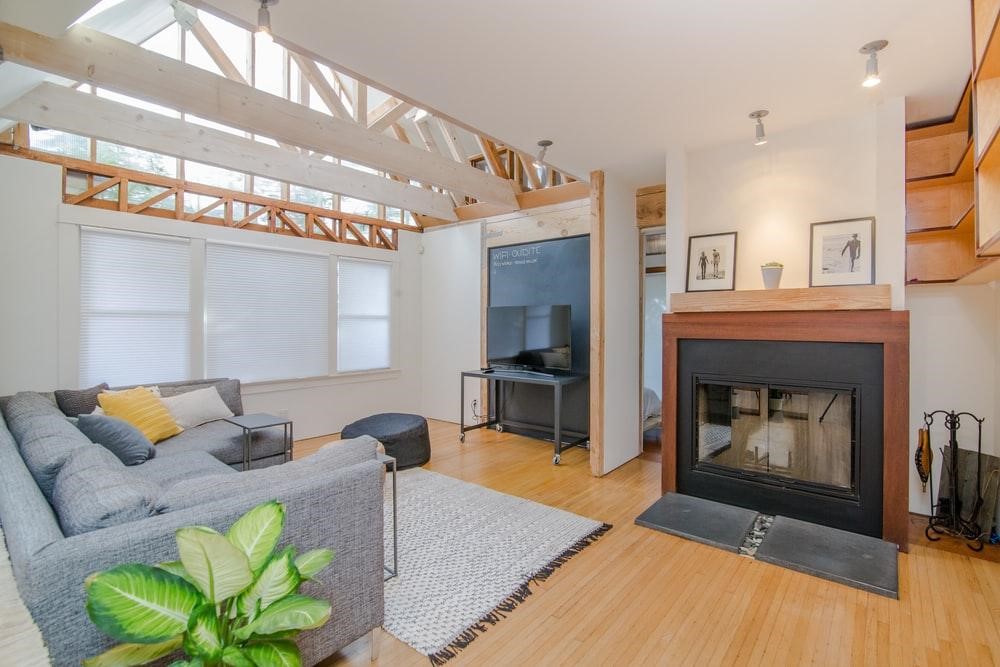You blinked, the summer was gone, and the winter crept in. One moment you’re wearing your Bermuda shorts, grilling barbecues with your friends, and the other, you put on a heavy sweater and ordered a pumpkin spice latte instead of your usual coffee. And even if the winter season brings joy, you’re aware that a bitter cold also accompanies it.
And even if you’re looking forward to snowball fights and trays of gingerbread cookies, you’re not too happy about the wind and cold that’ll make your teeth chatter. Sure, you can crank up the heat, but you’re already tight with money, and you don’t want the bills to rise more than necessary. So, what can you do to enjoy the winter thrills without dealing with the carryover?
You’re not the only homeowner who needs to stay warm during the cold season without burning more gas. We discussed with seasoned homeowners who managed to make their homes cozier without breaking the bank, and here are their secrets.
Install a programmable thermostat
A programmable thermostat allows you to set different temperatures for different times of the day because it’s no use to keep the home at 68 degrees the entire day. A programmable thermostat helps you save money for both air conditioning and heat. Presetting a lower temperature when you’re away or sleeping can lower your energy bills by up to 20%. Some devices can store up multiple temperature settings daily. So, you can manually set different programs for morning, day, evening, and night.
It’s easy to install a thermostat, so you won’t have to spend extra money to hire a professional. Follow the manufacturer’s instructions, and attach it to your heating system.
Here are some recommendations on how to set the thermostat daily.
- 6 a.m. to 9 a.m. = 68 degrees
- 9 a.m. to 5:30 p.m. = 60 degrees
- 5:30 to 11 p.m. = 68 degrees
- 11 p.m. to 6 a.m. = 60 degrees
Move the furniture away from radiators, registers, and vents
It may sound strange that you have to move the furniture once the winter comes, but often a couch or another big furniture item can block the flow of heat into the room. Keeping the furniture in place can lead to a colder house and a waste of money. If you have a forced-air system, the furniture items can also block the vents and trigger a house-wide pressure imbalance that disrupts the heat flow. Before turning on the heating system, evaluate each room of the house and redesign how the furniture is placed to make sure nothing blocks the flow of heat.
Get boiler maintenance
The boiler, like any other heating system, requires regular maintenance. It’s essential to service it before winter, so it won’t break down in the middle of December. Over time the boiler can become worn down and less efficient, failing to provide the same results. Giving it the needed maintenance will lower the risk of a breakdown. The engineer checking it may recommend sending the boiler to repair in a professional service. In this case, you can hire temporary boiler services to benefit from hot water and heating until the old one is repaired and ready to function. A boiler is a major financial investment, and you don’t afford to make it annually. Regular maintenance will maximize its lifespan and allow you to save money in the long run.
Minimize the romantic fires
You may love to spend your night with your partner in front of the fireplace, enjoying a glass of wine, but an open fireplace lets the same amount of heat escape as an open 48-inch window. Make sure that you cover the fireplace entrance and don’t have a fire going to prevent the heat from escaping. It’s a good idea to reduce the number of times when you use the fireplace during the winter. Please keep it going only for special occasions like Christmas day and your birthday anniversaries.
A roaring fireplace fire can exhaust around 20,000 cubic feet of heat per hour. You don’t want to heat to go outside when you lack warmth inside the house. The chimney replaces the hot air with a cold one that gets inside your house.
If you can’t resist the winter nights without a fireplace, install fireplace doors to prevent the heated air from leaving your living room.
Close the doors and stop the draft
It’s the moment to identify the drafts because they allow the cold air from outside to enter the house. How can you tell if you have drafts around the doors and windows? Light a match and get near the windows and doors. The draft will make the flame flicker.
When you heat your house, the rising hot air pulls the cold air from outside inside. The physical principle behind it is named the stack effect. If you identify and fix the spaces that allow cold air to enter the house, you can defeat it.
Use a door snake to seal the gaps under the doors. If you don’t have one, you can use a long thin cloth and rice or dried peas to create a sack. Sew the fabrics together and place the door snake under the door where you identify the draft.
Make sure that all outdoors and interior doors are closed when you try to keep the heat in a room.
Use the drapes to create a cozy environment
The drapes and curtains do more than blocking the sunlight. They also prevent the cold from entering inside the house. Open them in the morning to welcome natural heat and light from the sun indoors and close them before sunset to trap the warmth inside, and make sure that your windows are clean to allow the light and heat to enter. Also, consider buying some insulating curtains for your bedroom to retain the heat. Each square foot of window you insulate during the winter nights saves around one gallon of oil annually.
Wrap up
And here you have them, the recommendations from seasoned homeowners on how to make your home cozier this winter.

